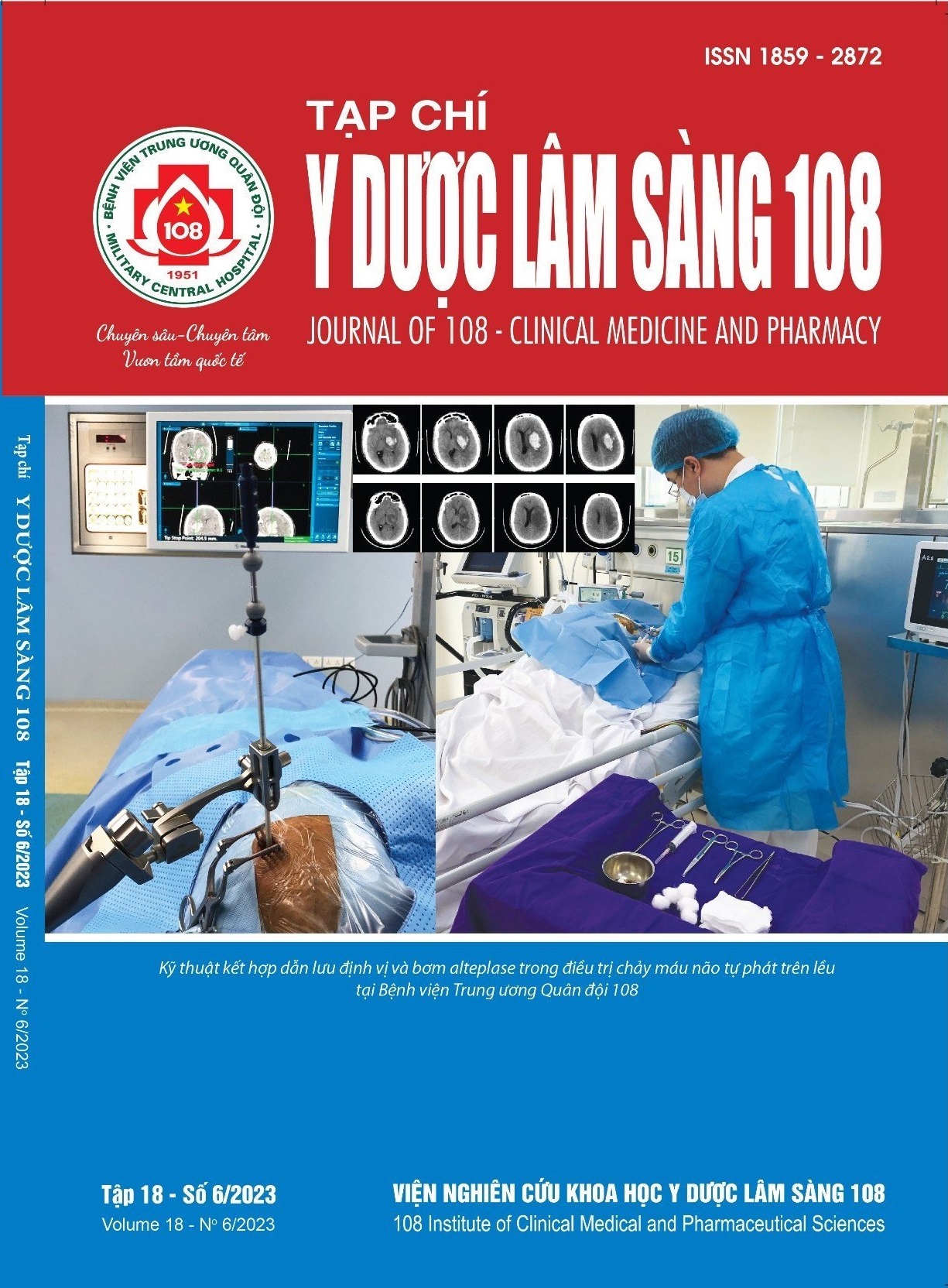Clinical and paraclinical characteristics in endoscopic intragastric balloon patients for obesity treatment
Main Article Content
Keywords
Abstract
Objective: Evaluation of clinical, subclinical characteristics and comorbidities in obese patients. Subject and method: Patients aged 18-60 years old. BMI ≥ 30kg/m2 with combination: High blood presure, diabetes, dyslipidemia... or BMI ≥ 35kg/m2. Parameters to be monitored: Age, gender, clinical features, weight, BMI, comorbidities... Result: Obesity patients < 30 years old accounted for the most proportion: 52.8%. Mean age was: 30 ± 9. Female/male: 49/23 (2.1). Obesity grade 1, 2 and 3 accounted for the corresponding rate: 56.9%, 25.0% and 18.1%. The mean BMI was: 35.3 ± 4.8kg/m2. Average weight: 93.5 ± 19.8 (kg). Dyslipidemia accounted for the highest percentage: 70.8%, hypertension: 37.5%. Conclusion: Obesity has high comorbidities and requires active treatment.
Article Details
References
2. Bùi Thanh Phúc (2021) Nghiên cứu ứng dụng phẫu thuật nội soi đặt vòng thắt dạ dày điều trị béo phì. Luận án Tiến sỹ y học. Đại học Y Hà Nội 2021.
3. Genco A, Bruni T, Doldi SB et al (2005) Bioenterics intragastric balloon: The italian experience with 2,515 patient. Obes Surg 15(8): 1161-1164.
4. Toolabi K, Golzarand M, Farid R (2016) Laparoscopic adjustable gastric banding: Efficacy and consequences over a 13-year period. Am J Surg 212(1): 62-68.
5. Trujillo MR, Muller D, Widmer JD, Warschkow R, Muller MK (2016) Long-term follow-up of gastric banding 10 years and beyond. Obes Surg 26(3): 581-587.
6. Froylich D, Abramovich-Segal T, Pascal G, Haskins I, Appel B, Kafri N, Hazzan D (2018) Long-term (over 10 years) retrospective follow-up of laparoscopic adjustable gastric banding. Obes Surg 28(4): 976-980.
7. Ohta M, Kitano S, Kai S, Shiromizu A, Iwashita Y, Endo Y, Kawano Y, Masaki T, Kakuma T, Yoshimatsu H (2013) Initial Japanese experience with the LAP-BAND system. Asian J Endosc Surg 6(1): 39-43.
8. Liu XZ, Yin K, Fan J, Shen XJ, Xu MJ, Wang WH, Zhang YG, Zheng CZ, Zou da J (2015) Long-Term outcomes and experience of laparoscopic adjustable gastric banding: One center's results in China. Surg Obes Relat Dis 11(4): 855-859.
9. Kowalewski PK, Olszewski R, Walędziak MS, Janik MR, Kwiatkowski A, Gałązka-Świderek N, Cichoń K, Brągoszewski J, Paśnik K (2018) Long-Term Outcomes of Laparoscopic Sleeve Gastrectomy-a Single-Center, Retrospective Study. Obes Surg 28(1):130-134. doi: 10.1007/s11695-017-2795-2.
10. Stroh C, Hohmann U, Schramm H et al (2011) Fourteen-year long-term results after gastric banding. J Obes: 128451.
11. Patkar A, Fegelman E, R Kashyap S, Brethauer S, Bour E, Yoo A, Li G (2017) Assessing the real-world effect of laparoscopic bariatric surgery on the management of obesity-related comorbidities: A retrospective matched cohort study using a US Claims Database. Diabetes Obes Metab 19(2): 181-188.
12. Lee SK, Heo Y, Park JM, Kim YJ, Kim SM, Park do J, Han SM, Shim KW, Lee YJ, Lee JY, Kwon JW (2016) Roux-en-Y Gastric Bypass vs. Sleeve Gastrectomy vs. Gastric Banding: The first multicenter retrospective comparative cohort study in Obese Korean Patients. Yonsei Med J 57(4): 956-962.
 ISSN: 1859 - 2872
ISSN: 1859 - 2872
